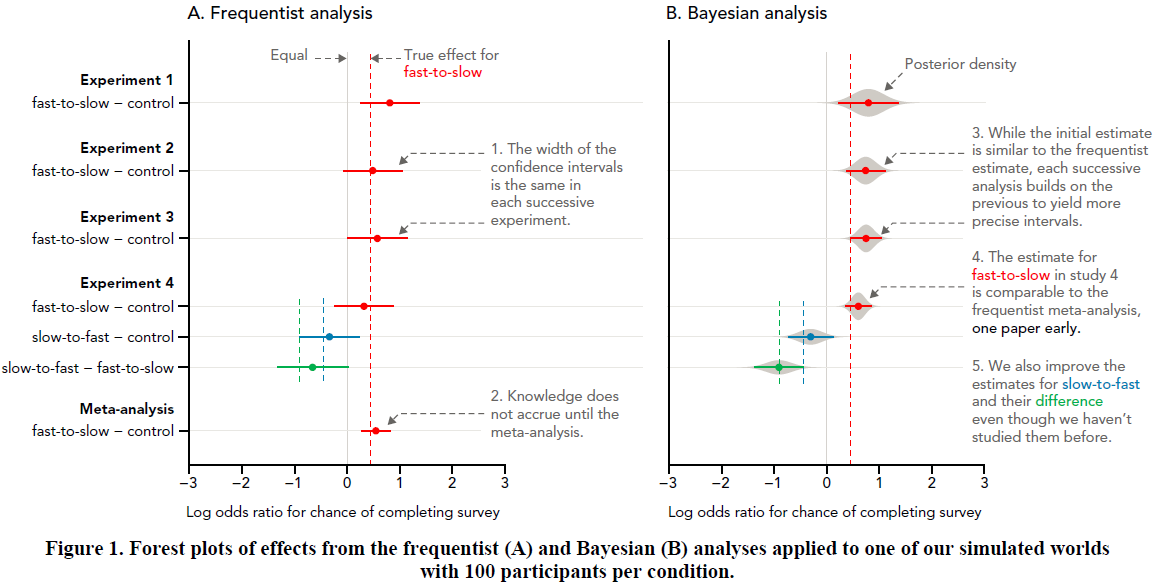Projects
Below is a smattering of research areas I have worked in or am currently working in. The list of projects for the cross-institutional lab that I co-direct with Jessica Hullamn, the MU collective, is also a good source for projects I am working on.
Communicating uncertainty

We are increasingly exposed to sensing and prediction in our daily lives (“how many steps did I take today?”, “how long until my bus shows up?”, “how much do I weigh?”). Uncertainty is both inherent to these systems and usually poorly communicated. To build understandable data presentations, we must study how people interpret their data and what goals they have for it. This informs the way that we should communicate results from our models, which in turn determines what models we must use in the first place.
-
ggdist: Visualizations of distributions and uncertainty (R package)
-
tidybayes: Tidy data and geoms for Bayesian models (R package)
-
Visual reasoning strategies for effect size judgments and decisions
- InfoVis 2020
- Best paper award (top 1 paper)
- BibTeX
- Data & code
-
Uncertainty displays using quantile dotplots or CDFs improve transit decision-making
- CHI 2018
- Honorable mention (top 5%)
- BibTeX
- Data & code
-
- CHI 2016
- BibTeX
- Data & code
-
How good is 85%? A survey tool to connect classifier evaluation to acceptability of accuracy
- CHI 2015
- BibTeX
- Data & code
-
Challenges in personal health tracking: The data isn’t enough
-
There’s no such thing as gaining a pound: Reconsidering the bathroom scale user interface
Usable statistics

Science is failing all around us! Nothing replicates! Things may not be as dire as all that, but in fields like HCI and psychology, the statistical tools we use are failing us: these tools let users wander around without guidance and produce results without assisting users in interpretation. What would usable statistical tools look like?
My work in usable statistical tools is nascent, but follows from my existing work in improving statistical communication in the fields of HCI and Information Visualization. For more information on that work, see the publications below and the Special Interest Group on Transparent Statistics in HCI.
-
Increasing the transparency of research papers with Explorable Multiverse Analyses
-
- InfoVis 2017
- BibTeX
- Data & code
-
- CHI 2016
- Honorable mention (top 5%)
- BibTeX
- Data & code
-
Beyond Weber’s Law: A second look at ranking visualizations of correlation
- InfoVis 2015
- Honorable mention (top 2 papers)
- DOI
- BibTeX
- Data & code
Personal informatics for health
-
Cognitive rhythms: Unobtrusive and continuous sensing of alertness using a mobile phone
-
There’s no such thing as gaining a pound: Reconsidering the bathroom scale user interface
-
Challenges in personal health tracking: The data isn’t enough
-
PVT-Touch: Adapting a reaction time test for touchscreen devices
-
Lullaby: A capture & access system for understanding the sleep environment
Gender representation in image search
-
Unequal representation and gender stereotypes in image search results for occupations
- CHI 2015
- Best paper award (top 1%)
- BibTeX
- Data & code
